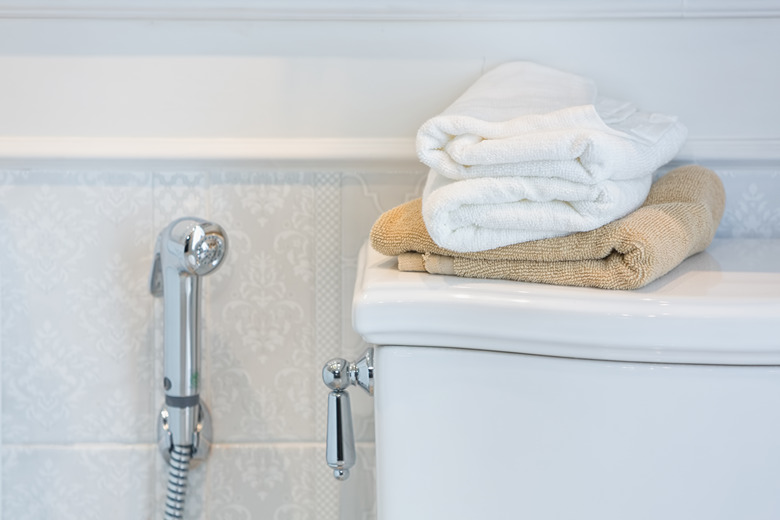Algae Growth In A Toilet Tank
We may receive a commission on purchases made from links.
Regular cleaning of everything in the bathroom is important, but a clean toilet may be the most critical part of making sure your bathroom is fresh and welcoming. Unfortunately, sometimes despite regular care, problems can show up in the toilet tank. If there's an excessive smell of sulfur paired with buildup that's slimier than normal mineral deposits, you may have an issue with algae or bacteria in your toilet tank.
Algae Growth in a Toilet
Algae Growth in a Toilet
Bacterial infections can appear as green, brown, black or even pink — green is the standard color we think of when we imagine algae growing, but buildup in the other colors can introduce additional problems.
This buildup can look greasy, stringy or even hairy, and will start to grow near the water line. Luckily, the problem is fairly easy to treat and easy to prevent even if it has happened in the past.
Dealing With Algae Growth
Dealing With Algae Growth
The first step is to turn off the water to the toilet and drain it. This is done by closing the valve on the incoming water line, then flushing the toilet until the tank is empty. Any excess water that won't drain should be removed by a sponge.
The next step is to clean existing buildup and bacteria from the tank. The most efficient way to kill this bacteria is by using bleach. Bleach is one of the more dangerous household chemicals and will require gloves, safety goggles and a protective breathing mask. Make sure all available ventilation is running and limit time in the bathroom while doing this cleaning; bleach fumes are a known irritant to the lungs.
Start with chlorine bleach in a spray bottle and spray the interior of the tank, allowing the bleach to sit for a few minutes. Scrub the sides of the tank with a toilet brush to remove all visible buildup. Once clean, open the shutoff valve and allow the tank to fill with water before flushing.
After the tank refills, add around a cup of chlorine bleach into the tank and allow the diluted bleach solution to sit in the tank for 10 to 15 minutes. Flush the toilet a number of times over an hour after this step.
Additional Treatment Steps
Additional Treatment Steps
For some growth, this is all that will be needed, but to take extra caution, you can follow the bleach treatment with an acid. Mosby Building Arts suggests white vinegar, or you can try muriatic acid. Use at least 3 cups of either chemical — for best results, allow the tank to fill halfway; then fill the remainder with the acid of choice. Let this solution sit for 10 to 15 minutes; then flush the toilet a number of times over the next hour to be sure everything moves through the drain.
Depending on the treatment acid, you'll want to have new gloves, safety glasses and a mask or respirator. Check the chemical's safety data sheet to be sure you are protected and use all available ventilation.
Algae Growth Prevention
Algae Growth Prevention
To prevent algae growth from happening again, you'll want to find a treatment that can be done easily and regularly. However, repeated use of bleach and acid will eat away at the rubber seals in the toilet tank as well as your plumbing, so this sort of shock treatment should be saved for extreme situations.
There are a number of toilet tablets (chemical cakes that can be dropped into the tank) available that will help to eliminate bacterial growth. These commercial products will be safe for prolonged use without damaging the toilet parts or plumbing.
